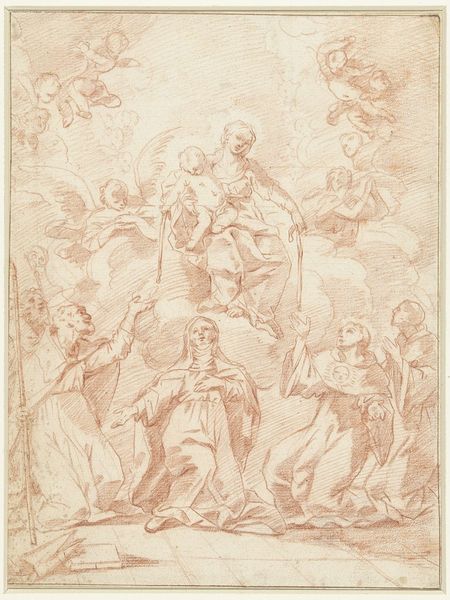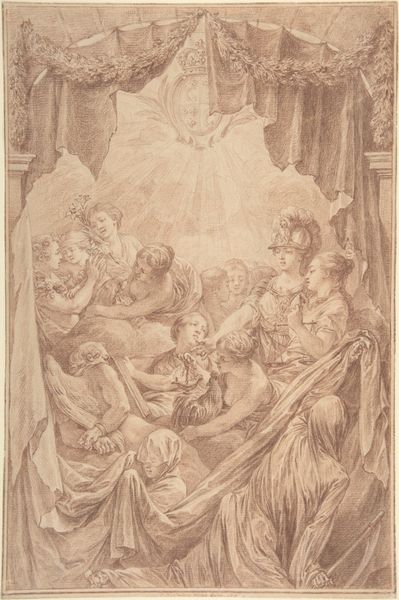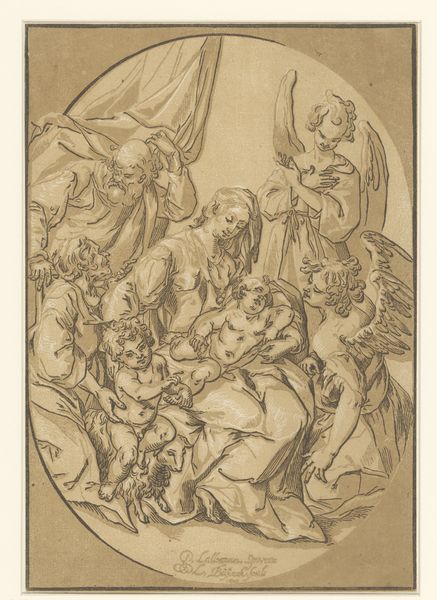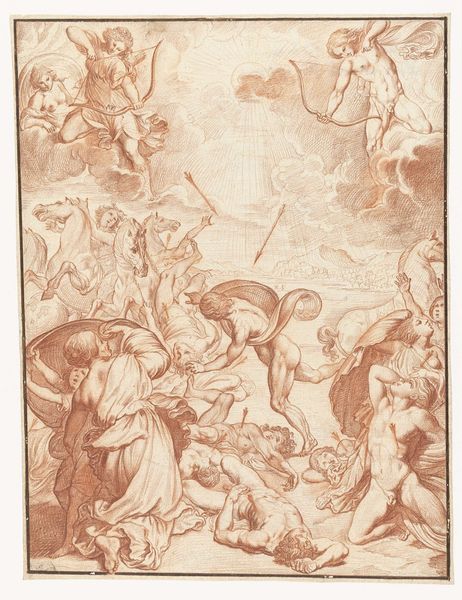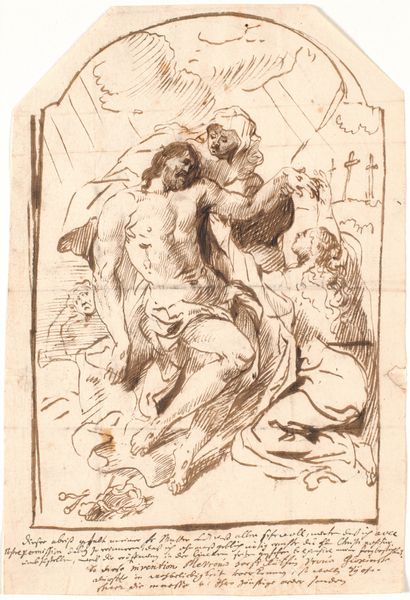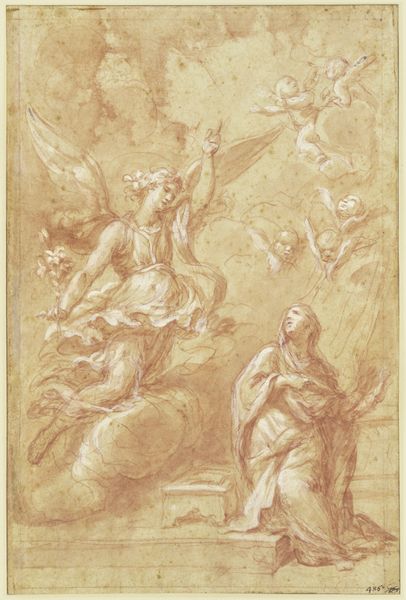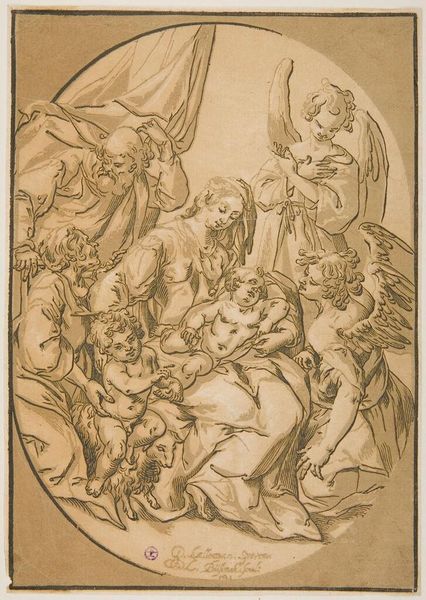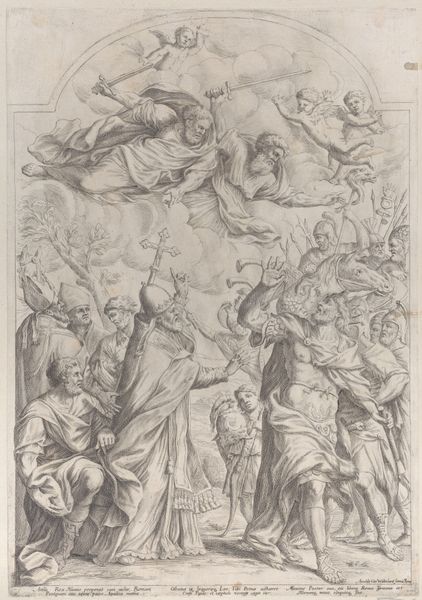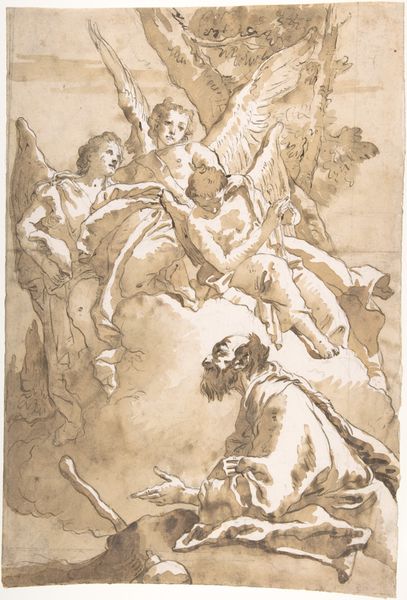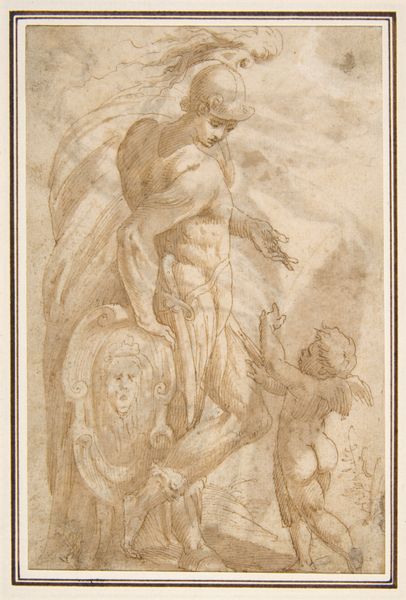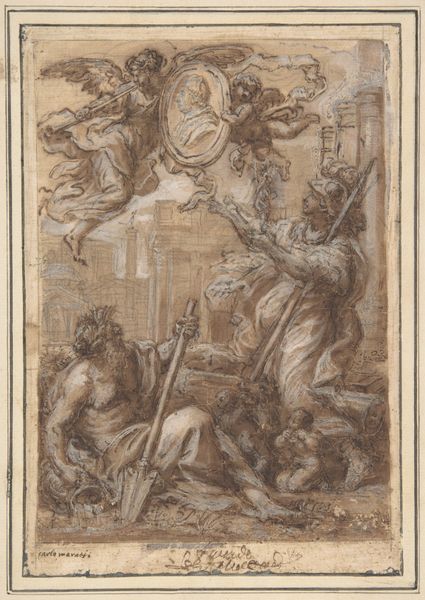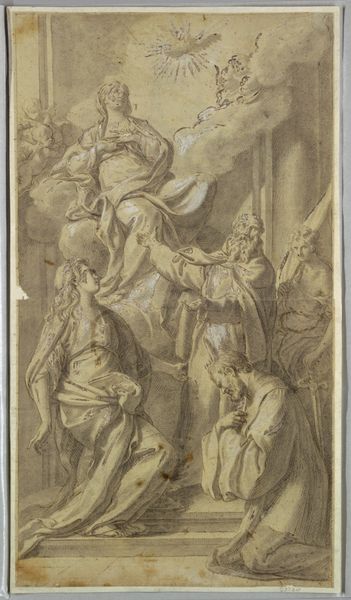
drawing, print, etching
#
drawing
#
baroque
# print
#
etching
#
etching
#
figuration
Dimensions: height 373 mm, width 235 mm
Copyright: Rijks Museum: Open Domain
Editor: This is "Angel with Three Putti in Clouds," an etching by Gilles Demarteau, created sometime between 1732 and 1776. It has such a delicate, ethereal quality, and I’m immediately drawn to the flowing lines and how they depict movement. What do you see in this piece, considering the period in which it was made? Curator: Considering its creation during the Baroque era, this etching, brimming with cherubic figures, prompts crucial inquiries. We see an angel seemingly descending, surrounded by putti. What does this represent during a time marked by strict religious doctrine? Is it a literal depiction of divine intervention or perhaps an allegory addressing societal hierarchies? Think about how Baroque art often served as a tool for the powerful—did these representations of angelic figures simply reinforce existing power structures, suggesting a divinely ordained social order? Editor: So you're saying the seemingly innocent cherubs could be symbols of something more complex? Curator: Precisely! We must interrogate the visual language. Are the putti presented as innocent or complicit? The angel’s posture - does it signify benevolent guidance or an enforcement of divine authority? Examining such details helps unravel how art participated in shaping and perpetuating societal norms. This imagery resonates within historical conversations about gender as well. Consider the lack of a parental presence and think about women's roles and societal expectations of them in Baroque society. Editor: That's fascinating, I hadn't thought about it in terms of power structures. It's easy to get lost in the beauty without considering the underlying message. Curator: Absolutely. Art serves as a powerful conduit, both reflecting and shaping cultural perspectives. By investigating these historical, political, and social layers, we reveal its deeper, more critical meaning. This piece urges us to reconsider seemingly pious images through a lens attuned to gender dynamics, class structures, and the politics inherent in divine representation. Editor: I’ll never look at Baroque art the same way again. Thanks for the insight!
Comments
No comments
Be the first to comment and join the conversation on the ultimate creative platform.
